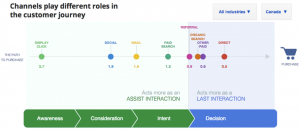 At the same time that organizations need to secure data more aggressively than ever before, brands are looking for more ways to deliver personalized experiences by collecting more customer data over an increasing number of cloud, mobile and social applications. It is creating the perfect storm leaving many to fear that the situation could grow worse, not better.
At the same time that organizations need to secure data more aggressively than ever before, brands are looking for more ways to deliver personalized experiences by collecting more customer data over an increasing number of cloud, mobile and social applications. It is creating the perfect storm leaving many to fear that the situation could grow worse, not better.
In a recent survey conducted by Ponemon Institute, companies reported a lack of confidence in their data breach preparedness. 78% don’t regularly update their data breach response plans and only 34% have conducted technical impact assessments to determine the full consequences of a breach for their organization*.
And the disturbing facts don’t stop there. The most significant, costly security breaches have occurred from within the business, meaning the thieves were actually authorized to access the data.
While most of us are aware of the dangers, it can be difficult to know what to do to prevent a data breach. However, there are questions that you can ask to understand your areas of vulnerability and ward off an insider security breach later:
- Do you use data layer encryption, or are you focused on securing data at the application level?
- Are you using second-factor authentication for administrators and internal users?
- Have you implemented limits that include administrative accounts?
Armed with this information, you can start taking the necessary steps to protect yourself.
There are some key features and capabilities to incorporate into data management systems that help deliver best practices in data security and privacy. For example, the ability to apply fine-grained security controls directly at the data layer for each identity profile rather than applying to broad segments of data at the application access level. This can help you consistently enforce tight defenses against unauthorized access across all apps, business units and channels.
Plus, granular security controls enable you to grant access strictly to the individuals who absolutely need the data to do their jobs rather than a large group of employees or service providers. For instance, your technical service representative can see a customer’s name and email info, but will not be able to access the financial data associated with that customer’s profile if it’s not relevant to his or her role. Plus, second factor authentication can further ensure data does not fall into the wrong hands.
Another key capability is end-to-end data encryption. Protecting consumer identity data as it moves throughout your organization, from the point of creation to where it’s stored and where it’s used can be a significant deterrent against data theft.
As data breaches continue to occur with alarming frequency, are you doing all you can to protect your customers and your brand?
Learn more about protecting your organization from the negative consequences of a data breach. Three Questions to Ask Now to Ward Off an Insider Security Breach Later.
This article was originally published on the UnboundID Blog.
(180)
Report Post







